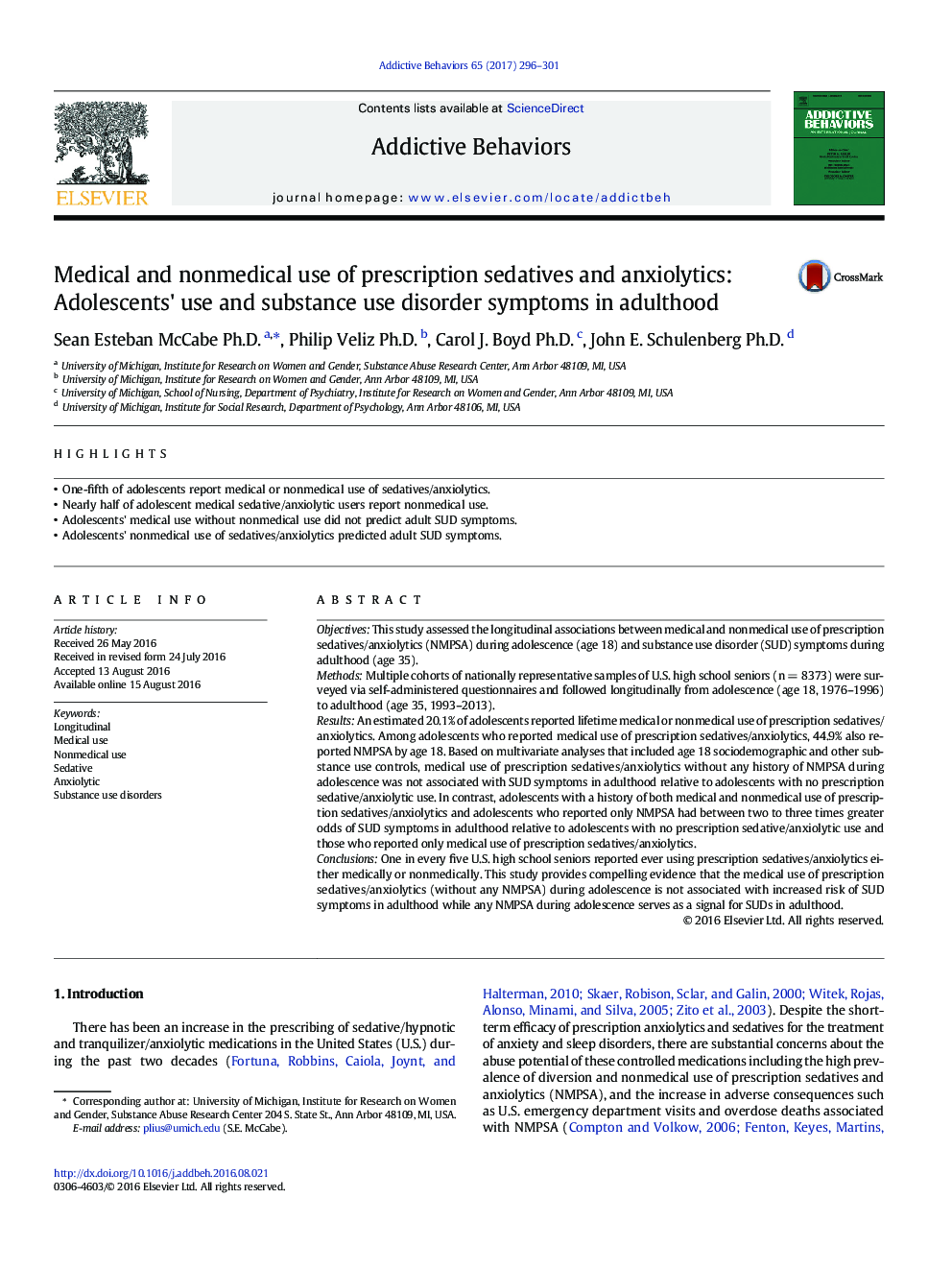| Article ID | Journal | Published Year | Pages | File Type |
|---|---|---|---|---|
| 5037926 | Addictive Behaviors | 2017 | 6 Pages |
â¢One-fifth of adolescents report medical or nonmedical use of sedatives/anxiolytics.â¢Nearly half of adolescent medical sedative/anxiolytic users report nonmedical use.â¢Adolescents' medical use without nonmedical use did not predict adult SUD symptoms.â¢Adolescents' nonmedical use of sedatives/anxiolytics predicted adult SUD symptoms.
ObjectivesThis study assessed the longitudinal associations between medical and nonmedical use of prescription sedatives/anxiolytics (NMPSA) during adolescence (age 18) and substance use disorder (SUD) symptoms during adulthood (age 35).MethodsMultiple cohorts of nationally representative samples of U.S. high school seniors (n = 8373) were surveyed via self-administered questionnaires and followed longitudinally from adolescence (age 18, 1976-1996) to adulthood (age 35, 1993-2013).ResultsAn estimated 20.1% of adolescents reported lifetime medical or nonmedical use of prescription sedatives/anxiolytics. Among adolescents who reported medical use of prescription sedatives/anxiolytics, 44.9% also reported NMPSA by age 18. Based on multivariate analyses that included age 18 sociodemographic and other substance use controls, medical use of prescription sedatives/anxiolytics without any history of NMPSA during adolescence was not associated with SUD symptoms in adulthood relative to adolescents with no prescription sedative/anxiolytic use. In contrast, adolescents with a history of both medical and nonmedical use of prescription sedatives/anxiolytics and adolescents who reported only NMPSA had between two to three times greater odds of SUD symptoms in adulthood relative to adolescents with no prescription sedative/anxiolytic use and those who reported only medical use of prescription sedatives/anxiolytics.ConclusionsOne in every five U.S. high school seniors reported ever using prescription sedatives/anxiolytics either medically or nonmedically. This study provides compelling evidence that the medical use of prescription sedatives/anxiolytics (without any NMPSA) during adolescence is not associated with increased risk of SUD symptoms in adulthood while any NMPSA during adolescence serves as a signal for SUDs in adulthood.
